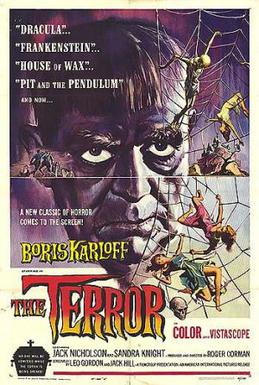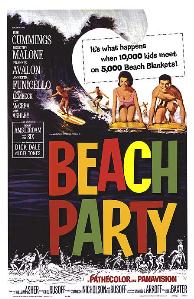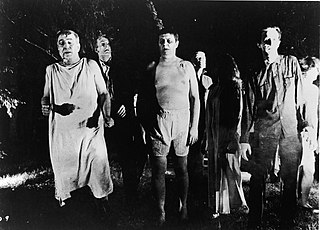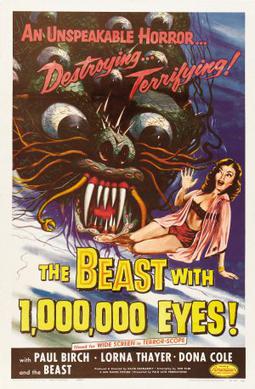
Roger William Corman is an American film director, producer, and actor. Known under various monikers such as "The Pope of Pop Cinema", "The Spiritual Godfather of the New Hollywood", and "The King of Cult", he is known as a trailblazer in the world of independent film. Many of Corman's films are low-budget cult films including some which are adapted from the tales of Edgar Allan Poe.
American International Pictures LLC is an American film production company owned by Amazon MGM Studios. In its original operating period, AIP was an independent film production and distribution company known for producing and releasing films from 1955 until 1980, a year after its acquisition by Filmways in 1979.

The Trip is a 1967 American psychedelic film released by American International Pictures, directed by Roger Corman and written by Jack Nicholson. It was shot on location in and around Los Angeles, including on top of Kirkwood in Laurel Canyon, the Hollywood Hills, and near Big Sur, California, over three weeks in March and April 1967. Peter Fonda stars as a young man who experiences his first LSD trip.

Samuel Zachary Arkoff was an American producer of B movies.

It Conquered the World is an independently made 1956 American black-and-white science fiction film, produced and directed by Roger Corman, starring Peter Graves, Lee Van Cleef, Beverly Garland, and Sally Fraser. It Conquered the World was released theatrically by American International Pictures as a double feature with The She-Creature.

The Wild Angels is a 1966 American independent outlaw biker film produced and directed by Roger Corman. Made on location in Southern California, The Wild Angels was the first film to associate actor Peter Fonda with Harley-Davidson motorcycles and 1960s counterculture. It inspired the biker film genre that continued into the early 1970s.

The Terror is a 1963 American independent horror film produced and directed by Roger Corman. The film stars Boris Karloff and Jack Nicholson, the latter of whom portrays a French officer who is seduced by a woman who is also a shapeshifting devil.

Beach Party is a 1963 American film and the first of seven beach party films from American International Pictures (AIP) aimed at a teen audience. This film is often credited with creating the beach party film genre.

Gas-s-s-s is a 1970 post-apocalyptic black comedy film produced and released by American International Pictures.
James Harvey Nicholson was an American film producer. He is best known as the co-founder, with Samuel Z. Arkoff, of American International Pictures.

The 1950s mark a significant change in the definition of the B movie. The transformation of the film industry due to court rulings that brought an end to many long-standing distribution practices as well as the challenge of television led to major changes in U.S. cinema at the exhibition level. These shifts signaled the eventual demise of the double feature that had defined much of the American moviegoing experience during Hollywood's Golden Age of the 1930s and 1940s. Even as the traditional bottom-of-the-bill second feature slowly disappeared, the term B movie was applied more broadly to the sort of inexpensive genre films that came out during the era, such as those produced to meet the demands of the burgeoning drive-in theater market.

Day the World Ended is a 1955 independently made black-and-white post-apocalyptic science fiction film, produced and directed by Roger Corman, that stars Richard Denning, Lori Nelson, Adele Jergens, Paul Birch (actor) and Mike Connors. Chet Huntley of NBC, later of The Huntley-Brinkley Report, served as the film's narrator. It was released by American Releasing Corporation as a double feature with The Phantom from 10,000 Leagues.

Monster from the Ocean Floor is an American 1954 science fiction film about a sea monster that terrorizes a Mexican cove. The film was directed by Wyott Ordung and starred Anne Kimbell and Stuart Wade.

The She-Creature, or The She Creature, is a 1956 American black-and-white science fiction horror film, released by American International Pictures from a script by Lou Rusoff. It was produced by Alex Gordon, directed by Edward L. Cahn, and stars Chester Morris, Marla English and Tom Conway, and casting Frieda Inescort and El Brendel in smaller roles. The producers hired Marla English because they thought she bore a strong resemblance to Elizabeth Taylor.

The Beast with a Million Eyes is a 1955 independently made American black-and-white science fiction film, produced and directed by David Kramarsky, that stars Paul Birch, Lorna Thayer, and Dona Cole. Some film sources have said that the film was co-directed by Lou Place. The film was co-produced by Roger Corman and Samuel Z. Arkoff. and was released by American Releasing Corporation, which later became American International Pictures.

Five Guns West is a 1955 Western film set during the American Civil War directed by Roger Corman. It was Corman's first film as director although he had already made two as producer. It was the second film released by the American Releasing Company, which later became American International Pictures.

Apache Woman is a 1955 American Western directed by Roger Corman and starring Lloyd Bridges. It was Corman's second film as director, following Five Guns West. It was one of four Westerns he made for American International Pictures, the other being Five Guns West, The Oklahoma Woman (1955) and Gunslinger (1956). Corman says Apache Woman and Oklahoma Woman were from ideas by AIP whereas the others were his ideas. This was the first film from Golden State Productions, a company headed by Alex Gordon.

Naked Paradise is a 1957 drama film directed by Roger Corman. It stars Richard Denning and Beverly Garland.

The Wild Racers is a 1968 American film directed by Daniel Haller and starring Fabian, Mimsy Farmer, and Judy Cornwell. The screenplay concerns a Grand Prix racing car driver.

Dragstrip Girl is a 1957 film starring John Ashley in his first lead role. American International Pictures released the film as a double feature with Rock All Night and it proved an early success for the studio.


















